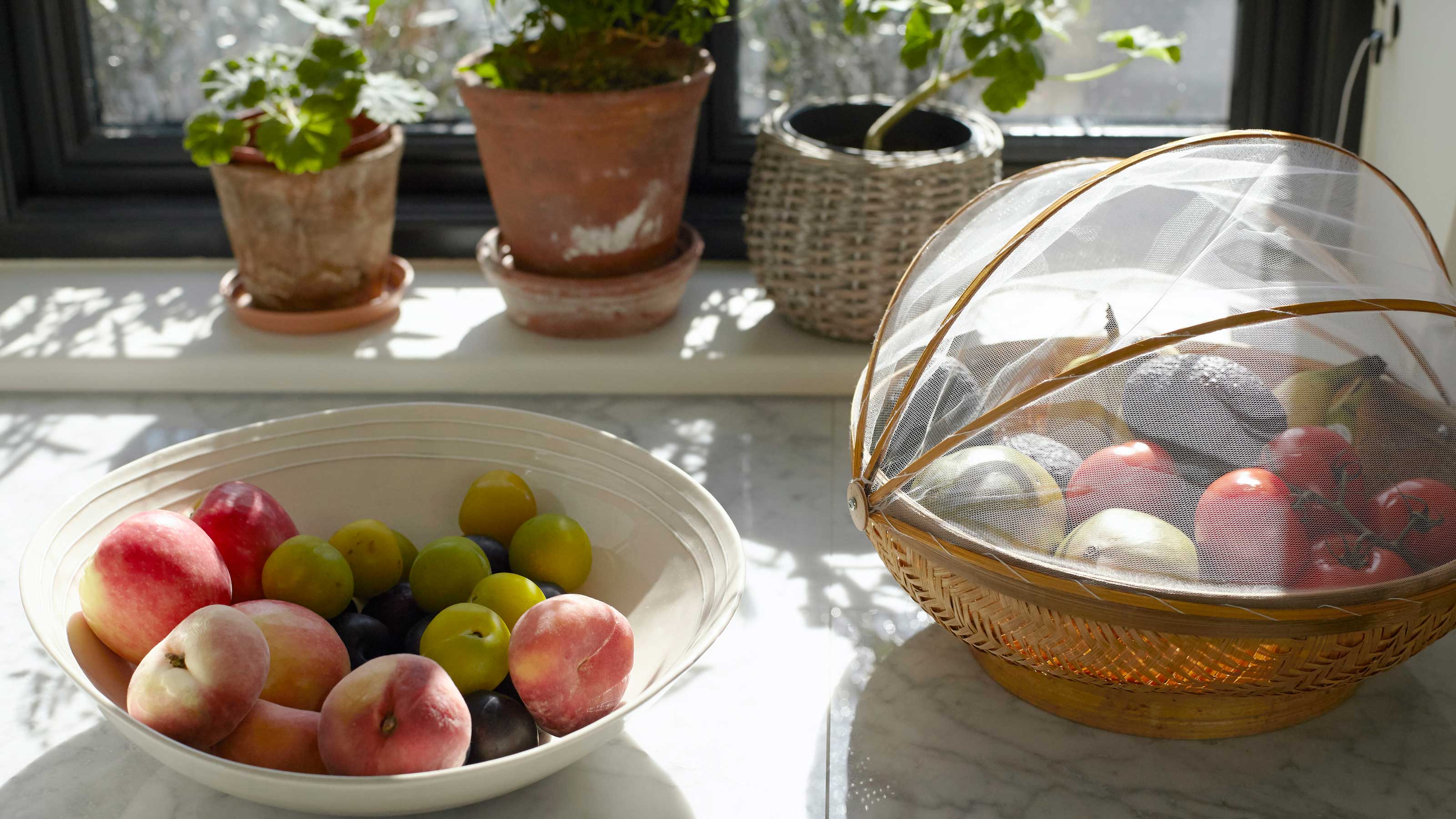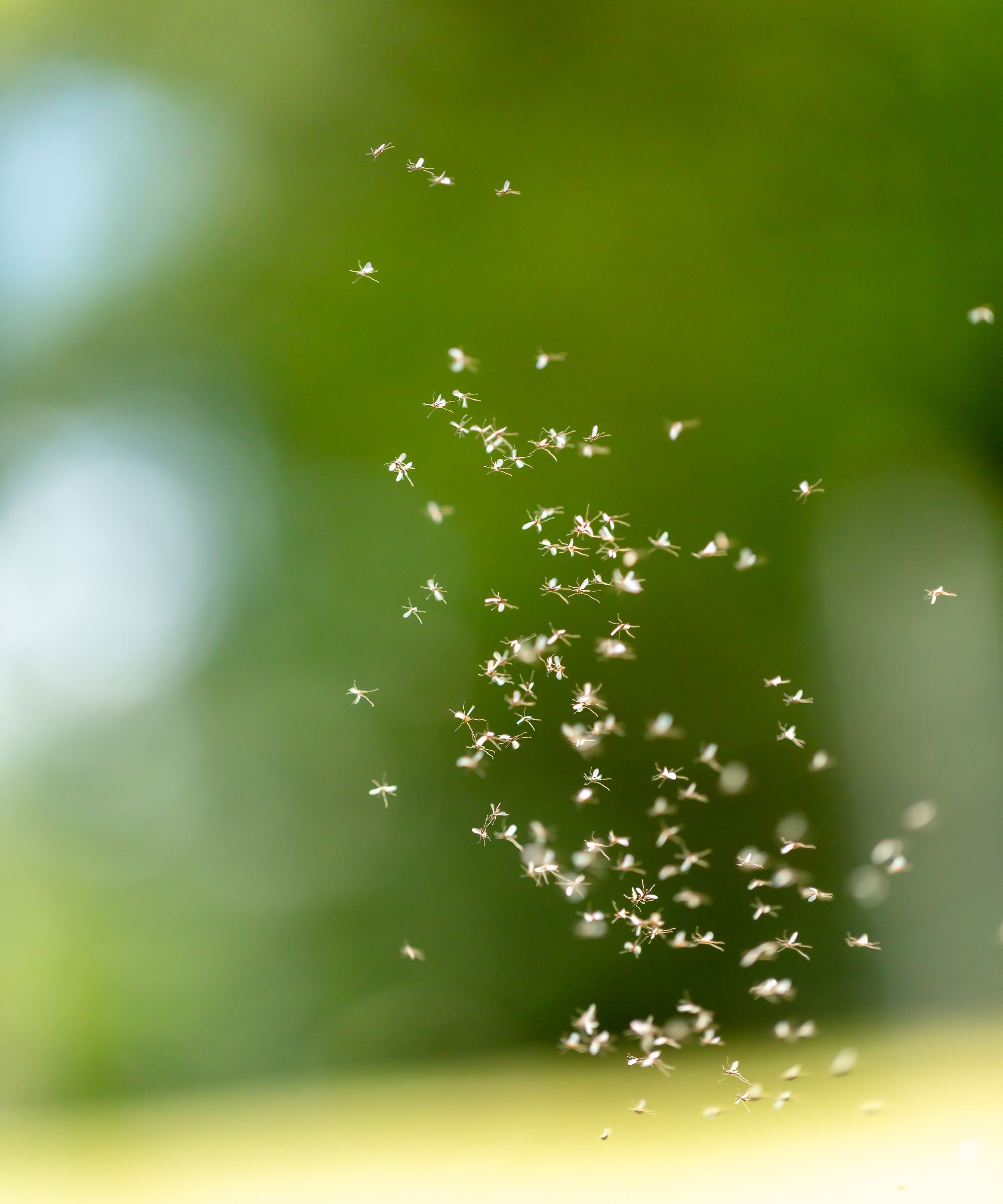Why am I getting so many gnats in the house? The reasons for an infestation
Find out why gnats are multiplying at speed and what to do about it from the experts


Gnats are a nuisance, and a rapid increase in their numbers can be extremely unpleasant. But as well as its being unwelcome, a plague of the critters can leave you asking why you’re getting so many gnats in the house suddenly.
Knowing how to get rid of gnats will mean you can deal with them, but understanding why they’ve invaded your space in numbers is also worth getting savvy about since prevention in future is preferable to needing a cure.
Pest pros are the people who can answer the question and they’ve provided the lowdown here.
The reasons gnats multiply in a home
The word ‘gnats’ is used to refer to a few different pests that can infest a home, and it may be that you’ll end up needing to get rid of fruit flies, get rid of fungus gnats, or deal with drain flies.
To understand why they’re there, and what action to take, this is what you need to know.

How do gnats get into a home?
You might wonder why gnats are in your home at all, but these small critters can access interiors easily. ‘Gnats may enter homes through open windows and doors, particularly in favorable outdoor conditions,’ explains Matt Kunz, president, Mr Rooter Plumbing, a Neighborly company.
‘Gnats, including fungus gnats and drain flies, are drawn to moisture, such as leaky faucets, damp areas, and waterlogged potted plants. Trash cans lacking proper covers are enticing to gnats, especially when they contain food or organic waste.’
Why do gnats multiply so quickly?
The reason why a home can be infested is the speed with which gnats breed. ‘Flies reproduce quickly, so once one or two are observed, the time from laying the eggs to adult can happen in a few days and numbers will continue to increase while breeding sites/food sources exist,’ explains Scot Hodges, vice president of professional development and technical services at Arrow Exterminators.

Scot Hodges has more than 24 years experience in the Pest Control Industry serving in various operational capacities including sales, service, and management, and currently serves as the Director of Professional Development within Arrow Exterminators’ Arrow University. He earned his Associate Certified Entomologist (ACE) through the Entomological Society of America.
How to identify the type of gnat
Taking a look at the gnats will let you know what you’re dealing with. ‘Fruit flies are approximately one-eighth of an inch long and are tan to brown in color,’ explains Damian Marcelo, certified entomologist with Fox Pest Control. ‘They will have either red or black eyes and will rest in areas with little to no airflow. When they are at rest they will quickly fly away when disturbed.
‘Fungus gnats are smaller than fruit flies and about one-sixteenth of an inch long and are a gray to black color. They will typically be found around live house plants and areas with little to no airflow. They don’t sit still long, and when swatted will just about disappear from the force.
‘Drain flies, also known as moth flies, are approximately one-eighth of an inch long and are a gray color. When they are at rest their wings will be situated in a heart-shaped pattern. If they are crushed there will be a powdery residue left behind.
‘Red-eyed fruit flies typically will seek out over-ripe fruits and vegetables to feed and lay their eggs in, black-eyed fruit flies will feed/lay eggs on fruits and vegetables as well but will also seek out other forms of decaying organic matter. Fungus gnat adults will feed on flower nectar, and as the name implies larvae feed on fungi found in soil and on plant roots. Drain flies feed on decomposing organic matter and sewage.’
How to deal with an infestation
Bear in mind that if there are lots of gnats in a house, they aren’t necessarily all either fruit flies, drain flies, or fungus gnats. ‘All three of these may be present in a home,’ explains Scot Hodges. ‘Fungus gnats are probably the least common of the three,’ he continues. ‘Fungus gnats are more associated with house plants, so if they are present, house plants are a great place to start.’ Follow the advice on how to get rid of gnats in plants to deal with these pests.
If there are gnats in your house, follow these steps from Scot:
- Once their presence is observed, pay attention to where they are being seen, since the source(s) will typically be in that general area. Items to pay particular attention to are trash bins. If you notice them around the trash bin, begin taking the garbage out every day.
• Aging fruits and vegetables can also be a likely source, so keeping these items in the refrigerator can prevent them from being a source.
• Kitchen sinks, drains, dishes, etc can also be a source. Making sure dishes are washed after use, and keeping garbage disposals and drains clean will prevent or eradicate infestation.
• Also check around the house to make sure there are no food sources present. Breeding sites/food sources are varied, and they can breed in anything that has caloric content and moisture.
• Check for any glasses or cups that are not empty and may have been left somewhere.
• Recycling bins are a common source especially with cans and bottles; alcoholic beverages such as wine and beer will also attract them, along with any food left in containers being saved for recycling.
• An easy way to determine if the sink drain is the source is to place a cup or glass over the drain(s) and let set overnight, then check under the glass to see if there are any adults present.
• Using a foaming drain cleaner can help to rid the drain of built-up food waste and eliminate the food source.
• Moist pet food left out can also be a source.
‘Once the food source is identified and removed the problem will clear up within a few days,’ says Scot, although he notes that ‘in some extreme cases, there can be plumbing drain leaks that may need to be inspected and repaired.'
‘For best results, once you notice one or two, go ahead and identify potential sources and remove them, otherwise you will see the population grow quickly,’ he advises. ‘If the problem persists more than a couple of weeks, you may want to consult a professional for an inspection and consultation although treatment will likely not be needed.’
FAQs
Where do gnats lay eggs?
Gnats lay eggs ‘in a food source for the larvae to feed on once hatching’, says Scot Hodges, vice president of professional development and technical services at Arrow Exterminators. ‘Eliminating that food source/breeding site is usually the quickest way to eliminate them.’
Gnats are inevitably present in nature, but as with keeping flies out of the house, a little know-how can rid your home of them. Good sanitation and housekeeping practices are key to prevention and dealing with any infestations. And act quickly when you see them. ‘A female fruit fly will lay over 500 eggs in her lifetime, and those eggs will hatch approximately 24 hours later,’ points out Damian Marcelo.
Sign up to the Homes & Gardens newsletter
Design expertise in your inbox – from inspiring decorating ideas and beautiful celebrity homes to practical gardening advice and shopping round-ups.

Sarah is a freelance journalist and editor. Previously executive editor of Ideal Home, she’s specialized in interiors, property and gardens for over 20 years, and covers interior design, house design, gardens, and cleaning and organizing a home for Homes & Gardens. She’s written for websites, including Houzz, Channel 4’s flagship website, 4Homes, and Future’s T3; national newspapers, including The Guardian; and magazines including Future’s Country Homes & Interiors, Homebuilding & Renovating, Period Living, and Style at Home, as well as House Beautiful, Good Homes, Grand Designs, Homes & Antiques, LandLove and The English Home among others. It’s no big surprise that she likes to put what she writes about into practice, and is a serial house renovator.
-
 'If it speaks to you, it will find its place' – 5 easy tips for starting a collection of antiques and vintage pieces, suggested by experts with years of experience
'If it speaks to you, it will find its place' – 5 easy tips for starting a collection of antiques and vintage pieces, suggested by experts with years of experienceWhether you're a fan of antique pottery or vintage art, these 5 designer-approved tips will help you build a lasting collection that will create impact and stand the test of time
By Eleanor Richardson
-
 Pot plants that thrive on neglect – 5 easy-going picks for super busy gardeners
Pot plants that thrive on neglect – 5 easy-going picks for super busy gardenersFrom spiky succulents to pollinator-friendly blooms, these expert recommendations need barely any attention to flourish
By Holly Crossley